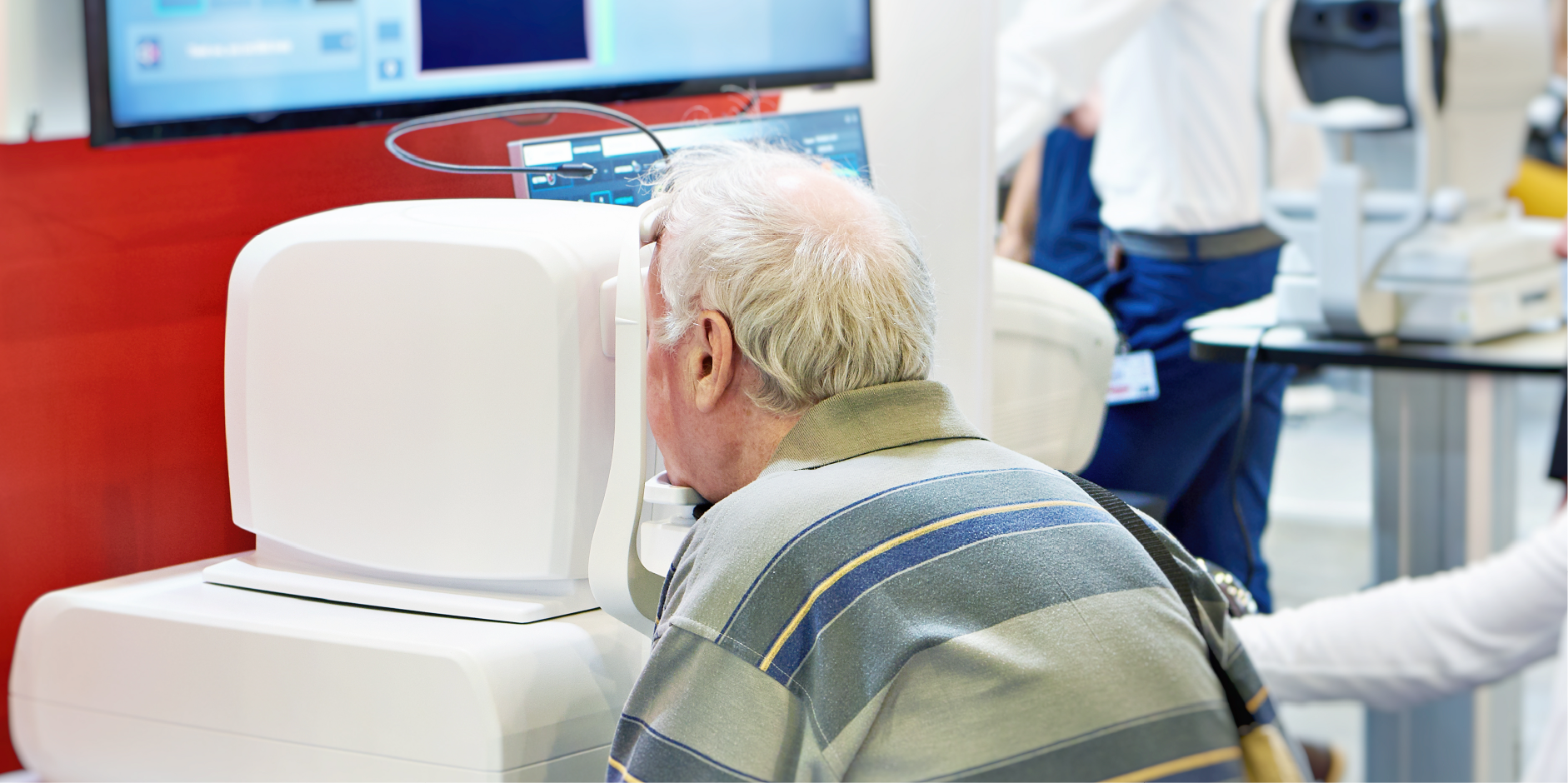Content on this page:
Content on this page:
Laboratory Tests and Ancillaries
Fasting blood sugar (FBS) and/or oral glucose tolerance test (OGTT) are used to assess the severity of DM, while glycosylated hemoglobin (HbA1c) is used to evaluate past glycemic control.
Imaging
Ancillary Ophthalmologic Exams
Fluorescein angiography evaluates the cause of unexplained decrease in
visual acuity (eg macular capillary non-perfusion, capillary leakage that leads
to macular edema) and guides in treating CSME. It may be used to help assess
areas of retinal non-perfusion, the presence of retinal neovascularization, and
microaneurysms or macular capillary non-perfusion in DME. Additionally, it may
be used to differentiate intraretinal microvascular abnormalities from new
blood vessels observed in proliferative diabetic retinopathy. This may also be
occasionally used to assess patients with questionable or difficult
examinations for DME. Furthermore, fluorescein angiography improves the
detection of peripheral ischemia and peripheral lesions that may not be
clinically apparent.
Color fundus photography is the preferred tool for retinopathy
assessment as it creates a permanent record of the retinal evaluation. It is
recommended to use wide-angle fundus imaging systems for documenting the
changes and the condition of the retinal periphery. This is considered the most
effective screening tool for diabetic retinopathy. This documents the status of
the retina in cases where surgery is not performed, progression of the disease,
and the response to treatment.
Optical coherence
tomography (OCT) is the most sensitive tool to identify and assess DME. It
produces high-resolution images of the vitreoretinal interface, neurosensory
retina, and subretinal space. OCT is used to quantify macular thickness,
determine the severity of DME, monitor the resolution of macular edema, and
identify vitreo-macular traction in patients with DME. It may also be used to
assess unexplained loss of visual acuity, evaluate patients with questionable
or difficult examinations for DME, investigate other causes of macular edema,
or screen patients with minimal or no diabetic retinopathy. Additionally, OCT is
used to evaluate the necessity for repeat anti-VEGF treatment, change in
therapeutic agent, initiation of laser therapy, or consideration for
vitrectomy.
 Diabetic Retinopathy_Diagnostics
Diabetic Retinopathy_DiagnosticsOCT Angiography (OCTA) provides a quantitative assessment of macular ischemia. It is capable of quantify regions of macular nonperfusion, identify retinal neovascular tissue, and detect preclinical microvascular alterations. Major advantages of OCTA include the non-invasiveness of the procedure and its ability to visualize depth-resolved, capillary-level abnormalities in the three retinal plexuses.
Ultrasonography may be used to evaluate the amount of vitreous hemorrhage, define the extent and severity of vitreoretinal traction, and detect retinal detachments in the setting of media opacity. It detects retinal detachment in diabetic eyes with cataract or vitreous hemorrhage.
